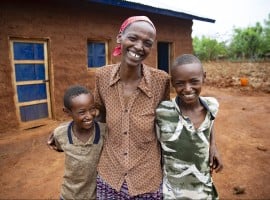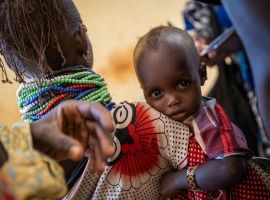
Read our 2024 annual report

Knowledge Hub
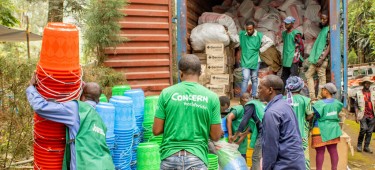
Strategic Assistance for Emergency Response (SAFER) Consortium
Overview
Funded by FCDO and ECHO, the Strategic Assistance for Emergency Response (SAFER) programme, established in November 2019, is a consortium of five international NGOs bringing together Concern Worldwide, Mercy Corps (MC – Consortium lead), Norwegian Refugee Council (NRC), ACTED and Solidarités International (SI) to provide an effective and coordinated rapid response mechanism in the eastern Democratic Republic of Congo (DRC).
SAFER delivers alert-based, short-term interventions to assist vulnerable people to be able to meet their basic needs and recover from crisis. SAFER responds to emerging needs driven by conflict and shocks and resulting population movements in North Kivu, South Kivu, Tanganyika and Ituri, which host the majority of Internally Displaced Persons (IDPs) in DRC. Since the beginning of activities until the end of March 2025, SAFER provided assistance to over 4.8 million internally displaced and vulnerable people in eastern DRC. The programme budget for 2025 is $38 million.
Programme description
SAFER’s objective is to provide flexible and coordinated emergency assistance to help reduce the immediate impact of a shock or crisis for the most vulnerable households. SAFER partners respond to alerts issued by OCHA (United Nations Office for the Coordination of Humanitarian Affairs) to deliver multisector responses through multi-purpose cash transfers, emergency water, sanitation and hygiene (WASH) activities, and protection assistance.
Partners have established a humanitarian first line mechanism composed of 2 response packages contributing to the programme’s goal of enabling households affected by conflict and shocks to cover their basic needs.
These two response packages are:
1) the provision of relevant direct assistance; prioritising cash and vouchers assistance, to the most vulnerable IDPs, returnees and host families to strengthen their purchasing power to enable them to meet their basic needs
2) WASH assistance, including infrastructures and services, to improve their access to safe drinking water and sanitation.
Both response packages have gender and protection activities mainstreamed, with specific gender- and protection-targeted activities addressing the needs of vulnerable groups.
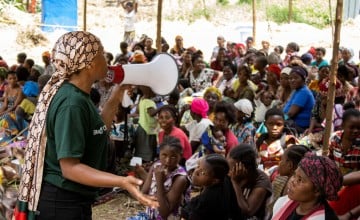
Expected outcomes
Impact: Vulnerable households affected by recent conflict and shocks can cover their basic needs.
Outcome: A coordinated humanitarian response enables vulnerable households affected by shocks to have safe and equitable access to multi-sectoral emergency assistance and reduce negative coping mechanisms.
- 1
Strengthened operational context monitoring and predictive modelling:
Regular and accurate information and analyses of the humanitarian situation are provided to humanitarian actors in a timely manner to allow for a more evidence-based coordinated response.
- 2
Cash and voucher assistance:
Provided to vulnerable households affected by shocks.
- 3
Water, Sanitation and Hygiene (WASH):
Emergency WASH assistance is provided to vulnerable households affected by shocks, improving access to safe drinking water and sanitation and hygiene practices.
- 4
Protection and gender mainstreaming:
Assistance is delivered in a contextually appropriate manner; respecting Do No Harm principles and ensuring a gender-sensitive approach and social inclusion
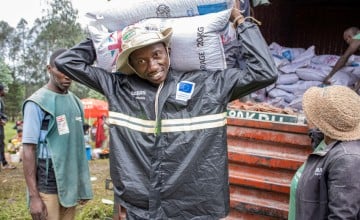
Rapid response mechanism
Within the SAFER framework, the aim is to respond rapidly to urgent needs while maintaining the highest standards of intervention quality. Once an alert has been issued by OCHA , often based on population movements, partners conduct a needs assessment to tailor the intervention. This evaluation must be conducted within 3 weeks of the alert. Each intervention is guided by the assessments conducted for each alert and each sector, with flexibility allowing activities to be adapted to the identified needs. Depending on the type of response, the intervention timelines are as follows:
- For cash distribution: 9 to 12 weeks between the alert and the start of distribution.
- For WASH intervention: 9 to 12 weeks between the alert and the promotion of hygiene or the use of facilities (if facilities have been built or rehabilitated).
- For protection intervention: 9 to 12 weeks between the alert and the first delivery of individual protection assistance.
The area covered by the intervention depends on the size of the alerts, the presence of other organisations, the security situation, and the accessibility of the area.
Across all its interventions, Concern aims to promote equality between men and women, with a dedicated team for gender integration, protection, and inclusion of people with specific needs. During the assessment phase, Concern organises separate discussion groups for men and women, as well as mixed groups.
Concern's reach and impact
In 2024, Concern delivered 6 multi-sector, emergency interventions in response to displacements and return movements in North and South Kivu, reaching approximately 270,000 people. These interventions included:
- 4 multipurpose cash assistance (MPCA) distributions, reaching almost 155,000 people with approximately $135 per household. Recipients used this cash to buy essential household items lost during displacement and food to cover essential household needs.
- 5 WASH interventions, including the operation of a water treatment unit serving 108,721 people across multiple displacement sites in Goma.1 Concern constructed 14 water sources/catchment systems and rehabilitated 1 water network, built 301 latrines and 60 showers, and delivered hygiene awareness sessions to almost 70,000 people. Concern also provided additional WASH infrastructure to health centres including 3 incinerators and 10 rubbish pits. These WASH activities are crucial to ensure access to water and sanitation services in areas of return or displacement and significantly reduce the risk of waterborne disease outbreaks.
- 3 protection interventions, including individual protection assistance for 406 people and awareness raising for 26,018 people. Where necessary, Concern referred survivors of protection violations onto other protection and health services, providing cash to cover transport and food allowances. Concern also trained 160 community leaders and other stakeholders on protection topics and awareness raising techniques, enabling them to become Community Protection Focal Points.
People reached in 2024:
- Total unique beneficiaries: 263, 438 (135,515 female; 127,923 male)
- MPCA: 154,833 people (80,124 female; 74,709 male)
- WASH : 170,074 people (87,792 female; 82,282 male)
- Protection: 26,018 people (19,157 female; 6,861 male)
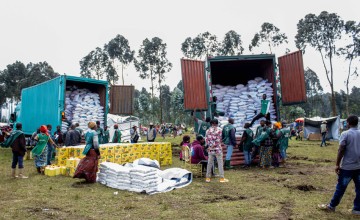
Programme impact
External evaluations have demonstrated the impact of SAFER interventions for alleviating the suffering and meeting the most immediate needs of newly displaced populations. This includes increased access to food and NFIs, water supply, sanitation and hygiene, protection, and agricultural and livelihood support. Following interventions, 91% of participants reported that their household’s vulnerability had reduced because of the assistance received and 85% reported a reduction in the use of negative coping mechanisms (for example, skipping meals due to lack of food). 100% of beneficiaries reported that multi-purpose cash assistance strongly benefitted their households, as they were able to allocate the money based on their priorities, thus enabling them to buy their preferred articles (including seeds) or cover the costs of education or clothes, for example. PDM reports across locations indicate that most of the assistance was systematically spent on food, followed by essential household items and health.
Beneficiaries reported several positive impacts of the WASH interventions beyond improved safe access to clean water and infrastructures (showers and latrines), including decreased cases of diseases like cholera and diarrhoea (and a decline in deaths associated with those diseases) and improved hygiene practices, thanks to the awareness raising sessions. Reduced GBV cases was also one of the key positive impacts of the WASH interventions as the installation of latrines in the displacement sites prevents girls and women from having to travel alone outside the camp where they would be increasingly vulnerable to GBV. Security also improved as there were less accidents associated with those searching for water, including a decline in drowning cases and road accidents.
Anecdotally, it was also reported to have increased dignity as beneficiaries reported no longer having to rely on the installation of the host community from which they would often be chased, nor having to shower or defecate in the open air, reducing the sense of shame that they used to feel. Some beneficiaries also highlighted that a knock-on effect of the water points was improved food security, as they could spend the money they reserved for water on food.
A key unintended positive outcome of the programme was improved social cohesion between host communities and IDPs. In several instances it was reported that they have successfully contributed to promoting peaceful cohabitation between antagonistic groups. For example, beneficiaries of the WASH intervention in a village in North Kivu reported that the installation of latrines led to a reduction in tensions between IDPs and the host community, which was due to the use of neighbouring fields belonging to the host community for going to the toilet.
Protection components of the interventions have proven to be effective in addressing key protection gaps in emergency settings and contributing to increased positive outcomes. The community-based approach (establishing community focal points to deliver awareness-raising sessions and refer protection cases and setting-up community protection committees to implement their own protection action plans) has built greater ownership of programmes’ objectives at the local level and increased sustainability of their actions.
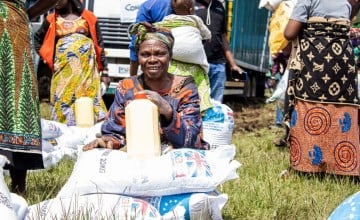
Focus on the water treatment unit in Bulengo
The Bulengo camp, in the surroundings of Goma, was home to over 120,000 IDPs. Although located on the shores of Lake Kivu, access to drinking water was very limited since there was no infrastructure to treat and distribute the lake water. People living in the site were forced to drink, cook with and wash in untreated and unsafe water. Under the SAFER project, Concern ran the WTU and pumping station from August 2023 until January 2025, when IDP sites were evacuated and infrastructures dismantled due to escalations in fighting.
Through this facility, Concern treated and distributed 3,410m³ of drinking water a day in the Bulengo and neighbouring Lushagala sites. The facility also provided free drinking water to other humanitarian organisations, reaching approximately 66,000 additional people. An estimated 222,000 people had access to water every day, benefiting from 15 litres of safe water for drinking, cooking and cleaning.
Concern repositioned WASH infrastructure from the IDP sites to areas of return for those people displaced from the sites. In March 2025, Concern constructed 218 latrines, 8 showers and 3 rainwater catchment systems in the heath area of Kibumba, which had received high numbers of returnees fleeing Goma. Concern also de-sludged and sanitised the 755 latrines left open following the evacuation of the IDP sites, essential work for preventing risks of disease outbreaks as well as accidents from people falling into uncovered pits.
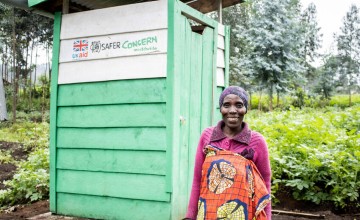
Lessons learned
1. Accountability to Affected Populations (AAP)in emergency interventions
- Sharing information: To ensure accountability and efficiency, to participants, the consortium continuously improves its practices. It is essential that the population is clearly informed about the assistance and its modalities (including the targeting criteria). Through our interventions, we have learned that prior to distribution it is vital to dedicate sufficient time during the awareness-raising sessions to explain the various steps of the process and the potential waiting times that participants may face . Similarly, maximizing this use of time at the distribution site (or just outside) for additional awareness-raising sessions also enhances the transmission of information.
- Access to complaint and response mechanisms (CRMs): It is essential that participants have access to communication channels with the Concern team, allowing them to provide feedback, ask questions, or lodge complaints if they are dissatisfied with the intervention, as part of Concern’s robust CRM systems. We have learned that increasing awareness about how to submit complaints and providing regular feedback to communities effectively stimulates the use of existing CRMs, mitigating any potential scepticism. Furthermore, ensuring the continuity of CRMs throughout the project increases community members' confidence in the use and functionality of these mechanisms.
2. Protection
The volatile security situation in Eastern DRC, coupled with the recent control of some territories by new authorities and the ever-changing context following the dismantling of IDP sites, has necessitated significant adaptation and agility to continue delivering assistance while ensuring the safety of both participants and staff members. Following the evacuation of sites, many displaced people are now residing within host communities.
Concern has observed that, when the budget permits, adopting an approach that targets the entire community facilitates smoother interventions, particularly in sensitive contexts (controlled areas), due to greater acceptance of the teams by the communities. This community-wide approach has achieved exceptionally high levels of acceptance and satisfaction, while also reducing tensions, especially between displaced persons and host families. Furthermore, the establishment of Protection Focal Points has enabled the identification of individuals with urgent protection needs and facilitated their safe and equitable access to humanitarian aid. Similarly, the implementation of a Rapid Protection Assessment (RPA) before each intervention analyses local power dynamics and provides information on the various challenges faced by the population, informing the best way to conduct the intervention.
3. Modality of Assistance for distribution
To promote accessibility, Concern has experimented with the provision of transport in order for participants with reduced mobility to safely access the distribution sites if they decide to attend in person as opposed to sending a family member on their behalf. It had been noticed that individuals prefer to attend the distribution themselves. This experimentation has proven successful, and when coupled with accessibility arrangements on site, these practices have significantly increased the inclusion of distributions.
To facilitate the distribution process, Concern establishes protection protocols for the journey to and from the site. For example, daily workers secure the way to and from the distribution site, ensuring the safety and guidance of participants.
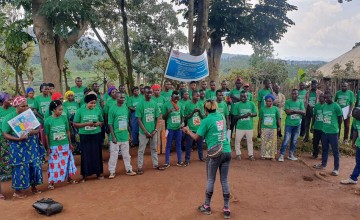
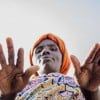
"I was suffering from starvation. When we were fleeing, we also lost our essential items. I thank Concern because I now have pots, cans to draw water, two bags of flour, beans and many other things. I used to eat once a day but now it will be three times."
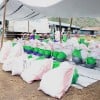
"I received jerrycans, soap, a bucket, sanitary pads and other items. It will help me a lot because I had nothing. When we returned home, we found that every single thing had gone. When one does not have a canister, something essential is missing because they cannot go and fetch water. Even when I was on my period I had to use loincloth as a sanitary napkin."
